Rating of the TOP 12 Wi-Fi access points: an overview and characteristics of the best models of 2022
Review and rating of popular models of access points. Main features, advantages, disadvantages and conclusions.
Access points needed everywhere - at home, in the office, in various public places. They are used for wireless distribution of the Internet using Wi-Fi.
These are not routers - they cannot distribute ip-addresses or the Internet from the provider, only connect to an existing network. But how to choose the right access point?
What is a Wi-Fi hotspot?
First of all, you need to understand that router and access point are different technical units.
The access point receives the Internet from the router and distributes it over Wi-Fi.
Some models can distribute IP, create a separate network, and so on, but these functions are limited because they only work with Static IP, or DHCP.
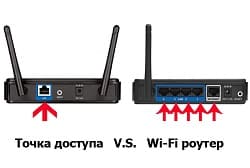
What to look for when choosing an access point?
There are a number of characteristics that you should pay special attention to when choosing an access point. The most significant of them:
- WiFi standard.
Most often, one device supports different standards.
Each of the standards supports different speeds and different frequencies, you need to look at each option separately. - Execution type.
Access points are internal and internal-street.
The latter are suitable for gazebos or other open areas outside the premises. - Port speed.
The speed of Internet transmission depends on this criterion. - Number of Internet ports.
This is an important criterion if it is necessary not only to build a network, but also to combine wired clients into a single network.
- The maximum number of connected devices to one point.
If there is a large number of technology, you need to clarify what the maximum number of connections is possible for a particular access point.
How to choose an access point?
When choosing, you need to carefully read all the nuances of the device - advantages, disadvantages and features.
Wireless wi-fi models
Wireless connectivity is incredibly convenient for multiple devices.
Rating of the TOP 7 best wireless wi-fi access points according to customer reviews and ratings.
MikroTik cAP ac
Efficient and powerful model that can be placed almost anywhere.
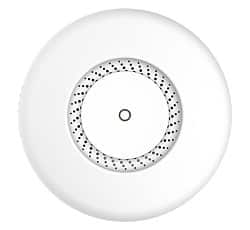
Two ports allow you to expand your network with additional cables.
It is possible to reconfigure to run any RouterOS script.
Specifications:
- Wi-Fi 802.11: b, a, g, n, ac;
- RAM: 128 MB;
- number of ports: 2;
- Port speed: 1 Gbps;
- linear dimensions: 145x30x145 mm.
Advantages
- can be placed anywhere where the cable reaches;
- stylish design suitable for any interior;
- increased power;
- incredibly low price among competitors;
- The kit comes with two boxes.
Flaws
- connection difficulties may arise;
- more suitable for professional use;
- fasteners are inconvenient to use.
ZYXEL NebulaFlex NWA1123-AC PRO
An easy-to-manage device that provides a stable connection anywhere.

It is possible to optimize using antenna and radio modules.
There is a calculation for maximum performance, which the antenna with double optimization helps to maintain.
Specifications:
- Wi-Fi 802.11: b, a, g, n, ac;
- number of internal antennas: 6;
- number of ports: 2;
- Port speed: 1 Gbps;
- linear dimensions: 204x35x192 mm.
Advantages
- low power consumption;
- there are powerful signal amplifiers;
- it is possible to configure using ZON - this no longer requires a computer;
- good load balancing;
- creation of several networks and the ability to bind each to a VLAN subnet.
Flaws
- setup takes a long time;
- rather bulky design;
- does not pass through reinforced concrete pavement.
Ubiquiti airCube AC
A worthy alternative to a powerful router for small offices or apartments with a small coverage area.
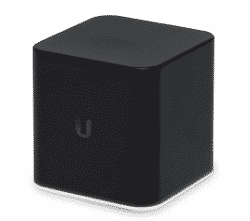
Due to the support of two types of frequency, the versatility of the device is increased - it fits any standard.
The router actively supports Passive PoE 24V technology.
An application is provided for control.
Specifications:
- Wi-Fi 802.11: b, a, g, n, ac;
- maximum possible speed: 867 Mbps;
- number of ports: 3;
- Port speed: 1 Gbps;
- linear dimensions: 90x88x89 mm.
Advantages
- competent design - the absence of unnecessary light bulbs and elements unpleasant to the eye;
- easy to set up;
- it is possible to adjust the power;
- new settings are regularly added to the firmware;
- intuitive control in the application.
Flaws
- PoE IN only works on the LAN port;
- Only PoE OUT works on the WAN port;
- a large amount of dust adheres to the surface.
Ubiquiti NanoStation 5AC Loco
A model that allows you to work with a modern revision of the Ubiquiti proprietary protocol called AirMax AC.

A decent computing part contributes to the creation of flexible wireless structures with high bandwidth.
Specifications:
- Wi-Fi 802.11: b, a, g, n, ac;
- maximum possible speed: 450 Mbps;
- number of ports: 1;
- Port speed: 1 Gbps;
- linear dimensions: 78x179x59 mm.
Advantages
- good communication quality;
- stable operation of the device;
- there are advanced settings;
- relatively low price for this price segment;
- the ability to work as a base station.
Flaws
- lack of adapters in the package;
- complex professional installation - specific knowledge will be required;
- uncomfortable fastening.
Ubiquiti UniFi AC LR
A model ideal for small spaces with limited coverage.
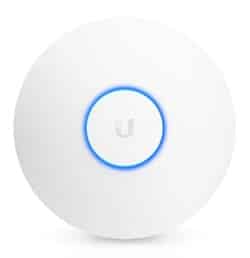
This device receives a signal from remote clients better thanks to a modern antenna module.
Specifications:
- Wi-Fi 802.11: b, a, g, n, ac;
- maximum possible speed: 1300 Mbps;
- number of ports: 1;
- Port speed: 1 Gbps;
- linear dimensions: 176x43x176 mm.
Advantages
- intuitive installation;
- impressive coverage area;
- design will fit perfectly into any interior;
- Power over PoE;
- the ability to flexibly customize the insides.
Flaws
- rather high price in comparison with similar competitors;
- lower transmission power compared to a single-band model;
- PoE standard is peculiar.
MikroTik wsAP ac lite
Compact model suitable for large areas - hotel complexes, airports and so on.

It is possible to simultaneously provide full coverage at different frequencies.
There is a separate port for charging smartphones, or for increasing memory.
Optionally, you can order a set of screws to open the front cover.
Specifications:
- Wi-Fi 802.11: b, a, g, n, ac;
- RAM: 64 MB;
- number of ports: 2;
- Port speed: 100 Mbps;
- linear dimensions: 112x30x126 mm.
Advantages
- compact dimensions;
- the presence of a USB port;
- a large number of additional ports that increase ease of use;
- possibility of installation in a cable channel instead of a socket;
- Possibility of remote power supply via POE.
Flaws
- a large amount of dust adheres to the surface;
- there are difficulties during the connection;
- more suitable for professional use.
MikroTik SXTsq Lite2
Outdoor model that works in any weather.
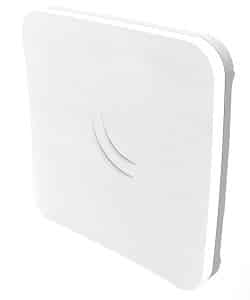
It is equipped with several mounting slots located in different places, which allows you to attach the device anywhere.
Grounding is provided as protection against lightning discharge.
Specifications:
- Wi-Fi 802.11: b, a, g, n;
- RAM: 64 MB;
- number of ports: 1;
- Port speed: 100 Mbps;
- linear dimensions: 129x34x129 mm.
Advantages
- incredibly low cost in comparison with competitors;
- compactness;
- stable operation of the device;
- stable connection in any weather;
- can be mounted on three different sides.
Flaws
- only L3 license;
- difficult to set up for use;
- only works in bridge and client mode.
Models with the ability to connect to the Internet via rg-45 cable
Such devices have a more stable connection and high-quality communication, but have mobility limitations due to the presence of a cable.
Ubiquiti UniFi AC Lite
A compact model that features high data transfer speeds and high-quality connectivity at a low price.
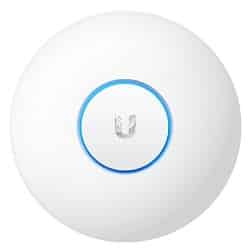
Designed specifically for hanging from the ceiling or mounting anywhere.
The technical characteristics of this model are enough to cover the standard for a home environment and provide a stable connection.
Specifications:
- Wi-Fi 802.11: b, a, g, n, ac;
- maximum possible connection speed: 1167 Mbps;
- number of ports: 2;
- Port speed: 1 Gbps;
- linear dimensions: 160x32x160 mm.
Advantages
- stable connection throughout the entire time of use;
- high speed of work;
- stylish design suitable for any interior;
- impressive coverage area;
- support for two WiFi bands.
Flaws
- rather high cost in comparison with competitors;
- there is no possibility to turn off the LEDs according to the schedule;
- can only be configured via the controller.
Ubiquiti UniFi AC Mesh
A modern point suitable for outdoor use - can work in any weather.
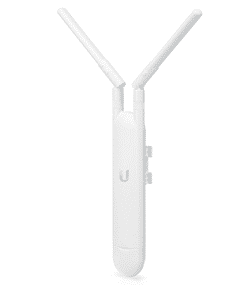
Protective boxes are no longer needed - a sealed case made of UV-resistant plastic protects the insides from any environmental influences.
Technical characteristics are kept as much as possible.
Specifications:
- Wi-Fi 802.11: b, a, g, n, ac;
- maximum possible connection speed: 1167 Mbps;
- number of ports: 2;
- Port speed: 1 Gbps;
- linear dimensions: 46x353x34 mm.
Advantages
- compactness;
- good resistance to weather conditions;
- high-quality design, suitable for any interior;
- high-quality fastening;
- there is access via SSH with full rights.
Flaws
- setup problems - a lot of errors and incomprehensible moments;
- Cloud key periodically does not work right out of the box;
- small transmission radius;
- pretty mediocre speed.
MikroTik wAP ac (RBwAPG-5HacD2HnD)
All-weather dual band point supporting AC standard.
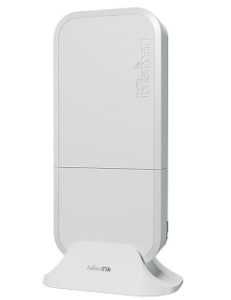
There is a housing completely protected from moisture, so the point can be installed in the garden or gazebo on the street.
There are two body designs for those who carefully select the interior.
Specifications:
- Wi-Fi 802.11: b, a, g, n, ac;
- maximum possible connection speed: 1167 Mbps;
- number of ports: 2;
- Port speed: 1 Gbps;
- linear dimensions: 85x185x30 mm.
Advantages
- the body is protected from the external environment;
- stylish design suitable for every interior;
- good data transfer rate;
- support for two WiFi bands.
- stable connection in any weather.
Flaws
- difficult to set up for use;
- there are difficulties during the connection;
- more suitable for professional use.
MikroTik wAP ac LTE kit
Incredibly economical model for the home.
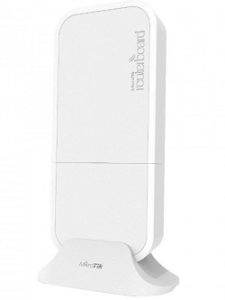
There is a micro-SIM slot for easier use.
The 716 MHz processor and 128 MB of RAM provide reliable and confident performance despite the compact size of the device.
Specifications:
- Wi-Fi 802.11: b, a, g, n, ac;
- maximum possible connection speed: 867 Mbps;
- number of ports: 2;
- Port speed: 1 Gbps;
- linear dimensions: 85x185x30 mm.
Advantages
- decent connection speed;
- weather resistance;
- attractive price in comparison with competitors;
- unobtrusive design;
- durability.
Flaws
- complex installation;
- easily soiled surface of the case;
- very confusing user settings.
ZYXEL NebulaFlex Pro WAC6503D-S
The best data transfer among all devices.

The antenna determines the optimal radiation pattern for each client.
Suitable for use with multiple devices.
Specifications:
- Wi-Fi 802.11: b, a, g, n, ac;
- maximum possible connection speed: 1750 Mbps;
- number of ports: 2;
- Port speed: 1 Gbps;
- linear dimensions: 236x62x227 mm.
Advantages
- fairly simple mount;
- support for specialized RADIUS authentication;
- the ability to control using the application;
- analysis of the territory before setting the point;
- impressive throughput.
Flaws
- complicated setup;
- high price;
- more suitable for professional use.
Reviews
This review has no replies yet.
conclusions
Based on the above characteristics, advantages and disadvantages, the following conclusions can be drawn:
- Not all hotspots are suitable for the home, some of them are for professional use.
- It is better to choose a point with protection from the external environment.
- It is worth paying special attention to the settings - many access points are difficult to install for the layman.
Useful video
From this video you will learn what to look for when choosing a Wi-Fi access point:


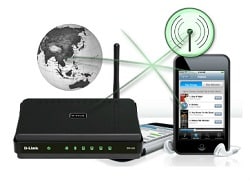 This is an important criterion if it is necessary not only to build a network, but also to combine wired clients into a single network.
This is an important criterion if it is necessary not only to build a network, but also to combine wired clients into a single network.